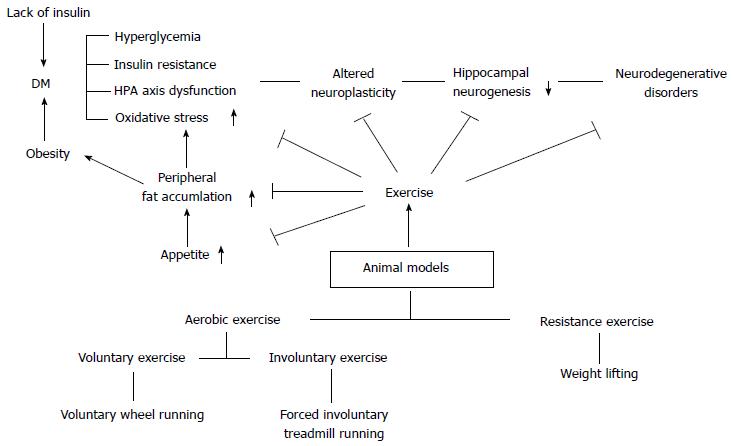Copyright
©The Author(s) 2015.
World J Diabetes. May 15, 2015; 6(4): 583-597
Published online May 15, 2015. doi: 10.4239/wjd.v6.i4.583
Published online May 15, 2015. doi: 10.4239/wjd.v6.i4.583
Figure 1 Exercise animal models can separate aerobic voluntary/involuntary exercises and non-aerobic resistance exercise.
The exercise can attenuated many neuro-related disease followed DM and obesity. DM can develop many kinds of dysregulation such as hyperglycemia, increasing insulin resistance and HPA axis dysfunction and oxidative stress. Exercise reduces peripheral fat accumulation and appetite in animal models, and it has preventive and therapeutic effects for the many risks to develop obesity and DM. A number of studies about diabetes have been revealed the related mechanisms through exercise animal models. Non-aerobic resistance exercise described in Table 3. DM: Diabetes mellitus; HPA: Hypothalamo-pituitary-adrenal.
- Citation: Yi SS. Effects of exercise on brain functions in diabetic animal models. World J Diabetes 2015; 6(4): 583-597
- URL: https://www.wjgnet.com/1948-9358/full/v6/i4/583.htm
- DOI: https://dx.doi.org/10.4239/wjd.v6.i4.583









